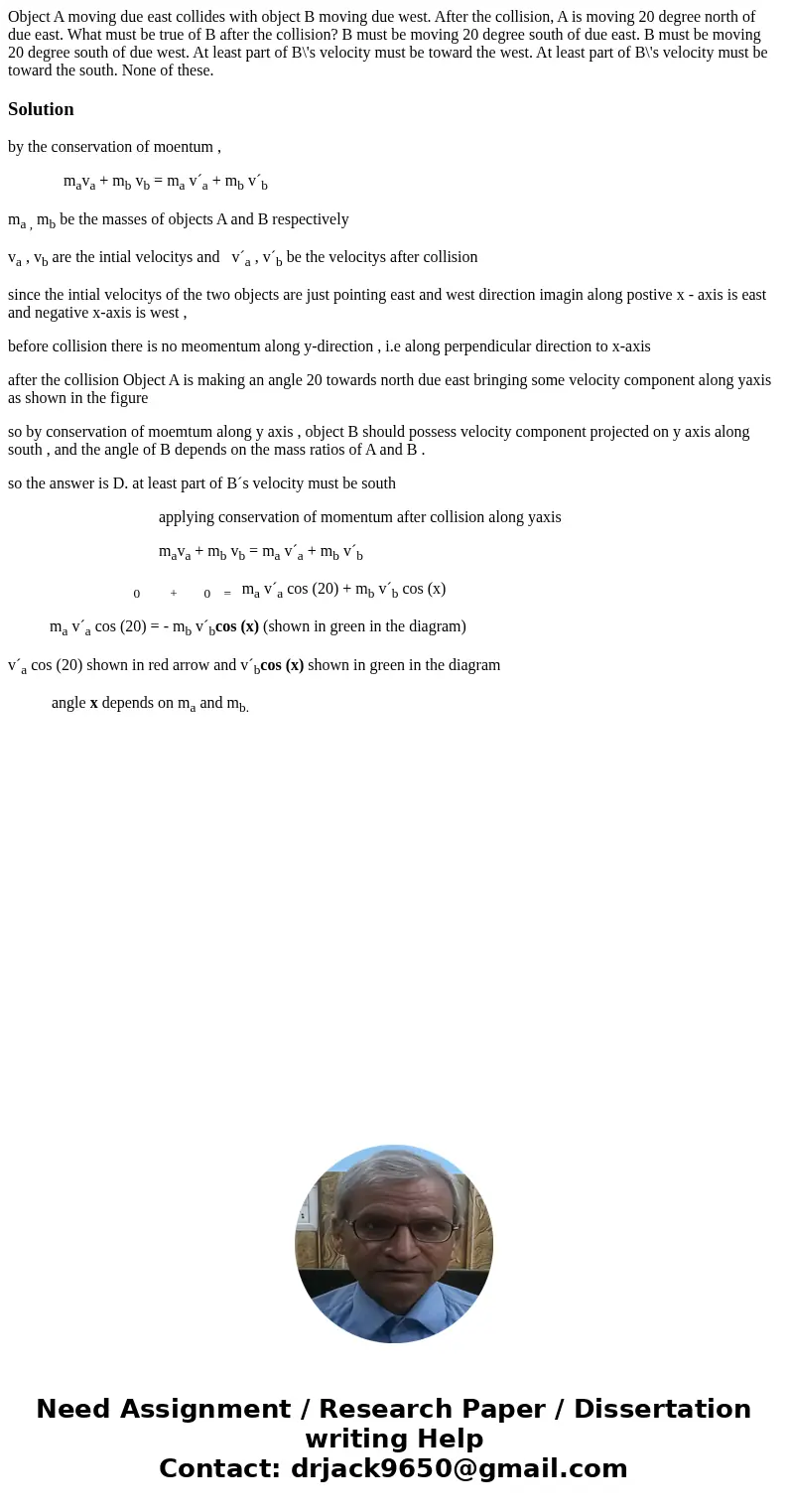Object A moving due east collides with object B moving due w
Solution
by the conservation of moentum ,
mava + mb vb = ma v´a + mb v´b
ma , mb be the masses of objects A and B respectively
va , vb are the intial velocitys and v´a , v´b be the velocitys after collision
since the intial velocitys of the two objects are just pointing east and west direction imagin along postive x - axis is east and negative x-axis is west ,
before collision there is no meomentum along y-direction , i.e along perpendicular direction to x-axis
after the collision Object A is making an angle 20 towards north due east bringing some velocity component along yaxis as shown in the figure
so by conservation of moemtum along y axis , object B should possess velocity component projected on y axis along south , and the angle of B depends on the mass ratios of A and B .
so the answer is D. at least part of B´s velocity must be south
applying conservation of momentum after collision along yaxis
mava + mb vb = ma v´a + mb v´b
0 + 0 = ma v´a cos (20) + mb v´b cos (x)
ma v´a cos (20) = - mb v´bcos (x) (shown in green in the diagram)
v´a cos (20) shown in red arrow and v´bcos (x) shown in green in the diagram
angle x depends on ma and mb.

 Homework Sourse
Homework Sourse